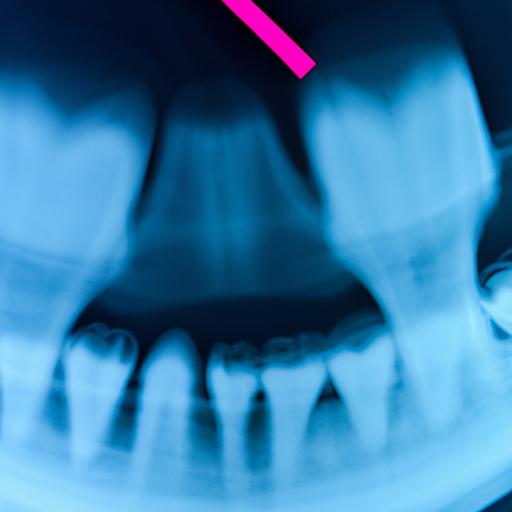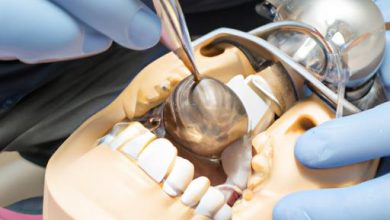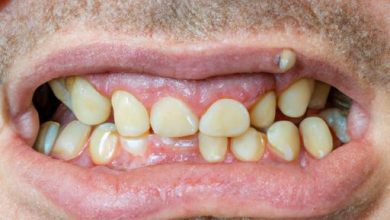What is Tooth Number 9?
As humans, we tend to take our teeth for granted. We use them to chew our food, and they help us to speak clearly. However, teeth play a crucial role in our overall health, and each tooth has its own unique function. It is essential to understand the different types of teeth and their location, which is why the tooth numbering system was created.
The Tooth Numbering System

The tooth numbering system is a way of identifying each tooth in the mouth. Dentists use this system to communicate with each other and to keep track of a patient’s dental health. The system divides the mouth into four quadrants, starting from the upper right to the upper left and then the lower left to the lower right. Each tooth has a unique number based on its location in the mouth. For instance, tooth number 1 is the upper right molar, and tooth number 32 is the lower right wisdom tooth.
Tooth number 9 is an essential tooth located in the upper jaw. It is the front tooth on the upper right side of the mouth and is also known as the right maxillary central incisor. Tooth number 9 is part of the central incisor group, along with tooth number 8, which is on the opposite side of the mouth. These teeth are crucial for biting and tearing food and play a vital role in speech.
Anatomy of Tooth Number 9
Tooth number 9 has four main parts: the crown, neck, root, and pulp. The crown is the visible part of the tooth above the gumline and is covered by enamel, which is the hardest substance in the human body. The neck is the narrow part of the tooth between the crown and the root. The root is the part of the tooth that is embedded in the jawbone and is responsible for anchoring the tooth in place. Finally, the pulp is the soft tissue inside the tooth that contains nerves and blood vessels.
Understanding the anatomy of tooth number 9 is crucial in identifying any potential problems that may arise. When tooth decay or other issues occur, they can affect the different parts of the tooth, leading to pain, infection, or even tooth loss. It is essential to maintain good oral hygiene and visit the dentist regularly to prevent any dental problems from occurring.
Common Problems with Tooth Number 9
Tooth number 9, like any other tooth in the mouth, can develop various dental problems. The most common issues that can occur with tooth number 9 include cavities, cracks or fractures, and gum disease.
Cavities occur when bacteria in the mouth produce acid, which eats away at the enamel of the tooth, creating a hole. If left untreated, cavities can cause pain, infection, and even tooth loss. Cracks or fractures can occur due to trauma or from biting down on hard objects. These cracks can cause pain and sensitivity and can lead to infection if left untreated. Gum disease occurs when bacteria build up around the gum line, causing inflammation and infection. If left untreated, gum disease can cause tooth loss and other health problems.
Treatment Options for Tooth Number 9
Fortunately, there are various treatment options available for tooth number 9, depending on the severity of the problem. The most common treatments for tooth number 9 include fillings, root canals, and extractions.
Fillings are the most common treatment for cavities. The dentist removes the decayed portion of the tooth and fills it with a dental filling material such as composite resin or amalgam. Root canals are necessary when the pulp of the tooth becomes infected or inflamed. During a root canal, the dentist removes the infected pulp, cleans the inside of the tooth, and seals it with a filling or crown. If the tooth is severely damaged or infected, extraction may be necessary. The dentist will remove the tooth and provide options for replacement, such as a dental implant or bridge.
In conclusion, understanding tooth number 9 and its importance in the mouth is essential for maintaining good oral health. Regular dental visits, proper oral hygiene, and timely treatment of any dental problems are crucial for preserving tooth number 9 and ensuring a healthy smile. As the leading provider of dental health news, treatments and therapies, inspiring patient stories, and expert advice, Zahnweiss Info is committed to helping our readers achieve optimal dental health.
Treatment Options for Tooth Number 9
When dental problems arise with tooth number 9, there are several treatment options available, depending on the severity of the issue. Here are some common treatment options for tooth number 9:
Fillings
If tooth decay has affected the crown of the tooth, a filling may be necessary. During this procedure, the dentist will remove the decayed part of the tooth and fill the cavity with a filling material, such as composite resin or amalgam. Fillings are a quick and straightforward procedure that can help to prevent further decay and restore the tooth’s function.
Root Canals
If the decay has spread to the pulp of the tooth, a root canal may be necessary. During this procedure, the dentist will remove the infected pulp and clean out the root canals of the tooth. They will then fill the canals with a special material and seal the tooth with a filling or a crown. Root canals are a more extensive procedure than fillings but are necessary to save the tooth from extraction.
Extraction
In some cases, tooth number 9 may be beyond repair and require extraction. This may be due to severe decay, trauma, or gum disease. Extraction is a last resort and should only be considered if there are no other treatment options available. After an extraction, the dentist may recommend a dental implant or bridge to replace the missing tooth.
Conclusion
In conclusion, tooth number 9 is an essential tooth located in the upper jaw. It is part of the central incisor group and plays a vital role in biting, tearing, and speaking. Understanding the anatomy of tooth number 9 is crucial in maintaining good oral health and identifying any potential problems that may arise. If dental problems occur, there are several treatment options available, including fillings, root canals, and extraction. It is essential to maintain good oral hygiene and visit the dentist regularly to prevent any dental problems from occurring. At Zahnweiss Info, we are dedicated to providing the latest updates on dental health news, treatments, and therapies, inspiring patient stories, and expert advice to help you live your healthiest life.




